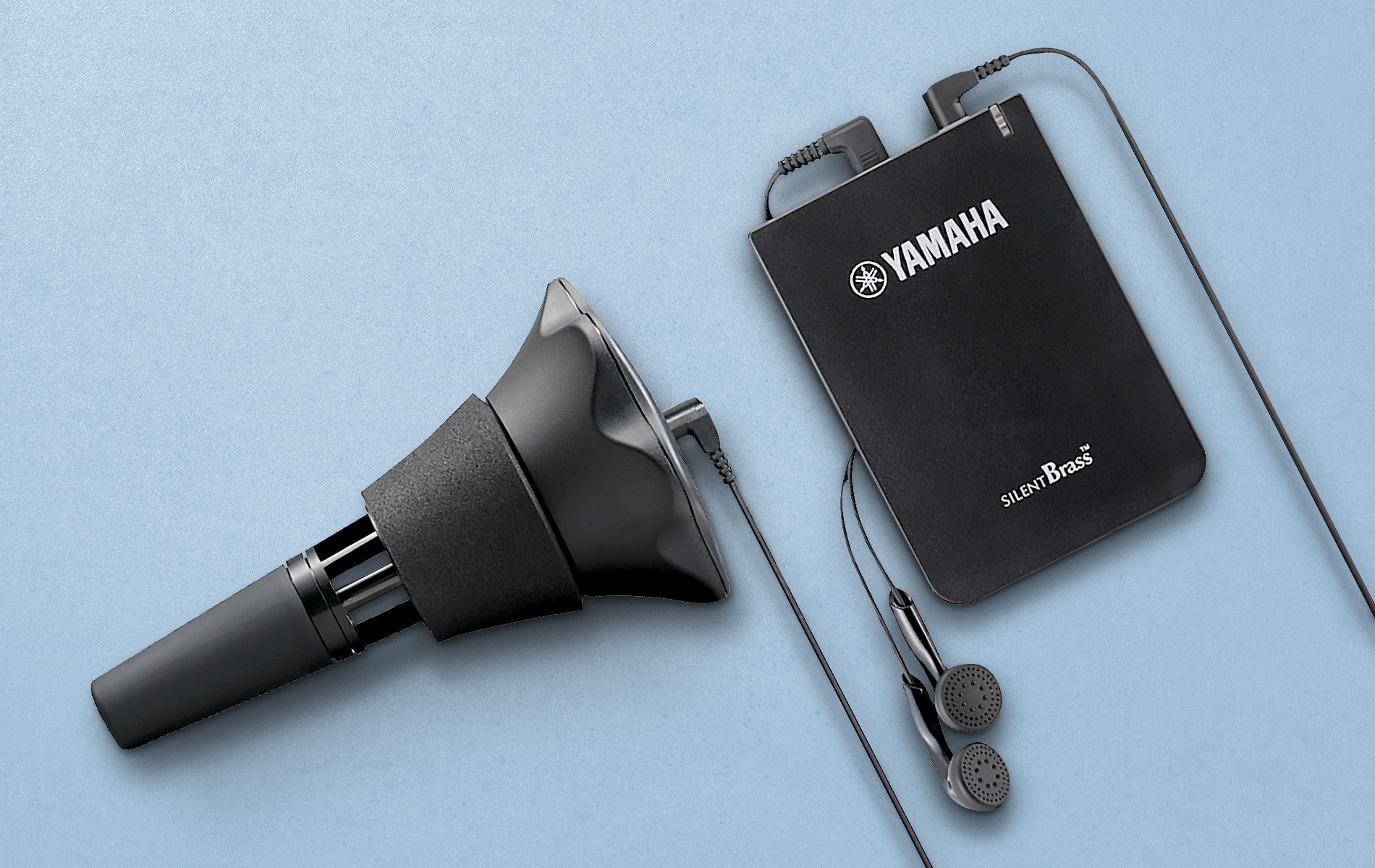
You probably think that making music is a wonderful thing, but your neighbors may tend to disagree with you. Pull out your horn late at night and start blowing and you may hear an angry knock at your door, or some pounding from the apartment below. I know I've un-endeared myself to several neighbors over the years!
Thankfully, there are some great solutions available that allow us to practice our horns in relative silence. Whether you live in an attached apartment or condo, spend time on the road in hotel rooms or have sleeping children, these days you can practice your brass instrument in relative quiet without disturbing anyone.
Modern technology has given us some great options which we'll get to in a moment, but lets first look at the long time standard - the practice mute. I described this mute in a previous article but I couldn't write about silent practicing without repeating the value of this classic tool. Practice mutes have been around for years and come in many varieties. Every player should have one handy, not just for situations where neighbors are an issue, but even backstage so that other band members aren't bombarded with a cacophony of sounds from multiple players warming up. The Woodwind & Brasswind offers many versions for most instruments. You can explore these here.
One of the problems with the traditional practice mutes mentioned above is that, while they silence the instrument for your neighbors, they also silence it for you! These mutes remove the natural sound of the instrument which is simply not ideal for the player. In my opinion, the greatest practice development in recent history began with Yamaha's introduction of the Silent Brass series of practice mutes. These handy units silence your instrument like a normal practice mute, but thanks to an attached amplification system, you are able to hear your horn in all its glory via a pair of headphones. Your spouse can sleep while you crank up your horn as loud as you need it! The unit also includes reverb (for a live room sound) and the ability to plug in an auxiliary sound source such as an mp3 player. With this feature, you can jam along with your favorite play-a-long recordings - a full band in your ears while barely any sound comes out of your room! Since Yamaha's innovation, other companies have jumped on the electronic practice mute bandwagon, such as the E-Sax version for sax players.
While we're on the topic of play-a-long recordings, I should add that they are a great way to enhance your silent practice sessions. When I'm in a hotel room gearing up for a jazz road gig, nothing prepares me better than a Silent Brass mute and some jazz play-a-longs. The classic series is by Jamey Aebersold, who has amassed a huge library of play-a-long discs covering a wide variety of jazz idioms. Recently, my personal favorites have been the series from Hal Leonard - these are recorded beautifully and sound great in your headphones! Once again, you can find a wide selection from these and other play-a-long series at The Woodwind & Brasswind. There are also some great play-a-long apps for your cell phone or tablet.
Practice mutes, even electronic ones, are not a replacement for a steady regimen of open-horn practice. After all, working on instrument tone is paramount for every player. But if you simply need to get the horn to your lips in an environment where volume is an issue, you need to pick up one of the practice mute examples listed above. Your gain, your neighbor's loss!

